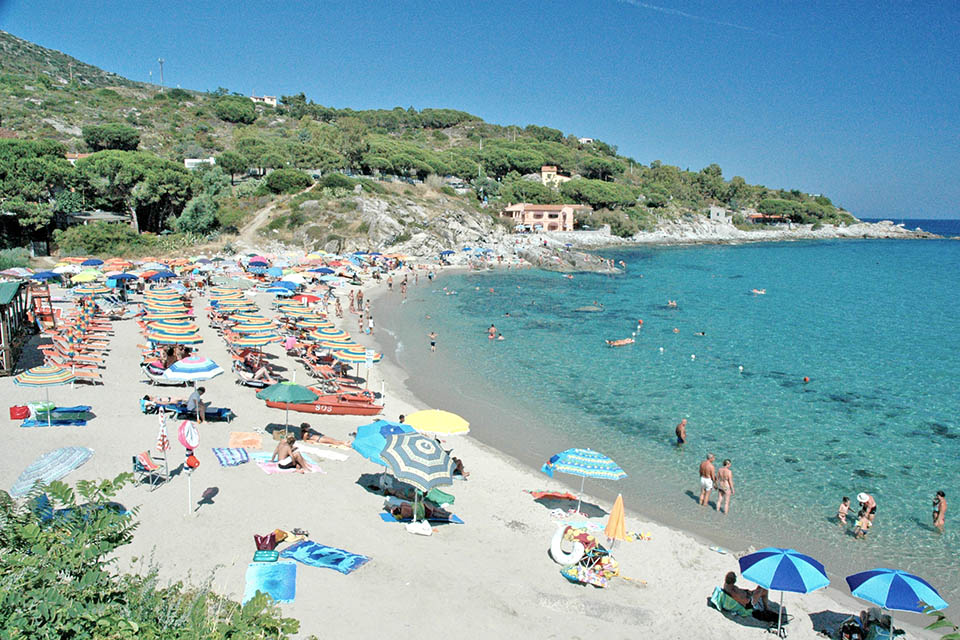
Keep going, and a short walk amidst rosemary bushes will take you right to the beach. La baia di Lacona un verde abbraccio che racchiude uno scenario unico, fatto di orizzonti marini e le isole di Montecristo, Pianosa. The car park is on the right hand side at the entrance to the campsite. Una novit assoluta nel mondo dell’outdoor: il trekking si intreccia con il kayak e con lo snorkeling in uno tra i luoghi pi caratteristici e unici dell’isola d’Elba, la baia di Lacona. Take the road that goes from Lacona to Marina di Campo, then take the first turning on your left and follow the signs for the Laconella Campsite. The beach is on the right hand side of the Golfo di Lacona. The water is turquoise blue and unbelievably clear, and the entire area, including the tiny, fine pebbles beach behind the cliffs of Punta Contessa, is very popular among snorkeling lovers. Oggi HYMER One dalla bellissima baia di Lacona a PortoAzzurro passando per la caratteristica Capoliveri. This small beach is only 150 metres long, and consists of white sand, with large pebbles on the left and the “V” shaped breathtaking cliffs known as Punta Contessa, that go right down as far as the sea, where you can still see the old artillery battery settlements dating back to World War II on the right it lies on the right hand side of the Gulf of Lacona, on the southern side of the Island of Elba. NASA image courtesy the U.S./Japan ASTER Science Team, NASA/GSFC/METI/ERSDAC/JAROS.Laconella is a truly natural beach, smaller and quieter than its “sister” beach Lacona.

The simulated-natural-color ASTER image covers an area of 29 x 30.4 km, is located near 15.9 degrees south latitude, 46.4 degrees east longitude, and was acquired on August 23, 2000. Elegance and attention to detail are the hallmark of this location. Some of them with balcony or panoramic terrace overlooking the Piazza dei Miracoli with its famous Tower of Pisa. Near water, shrimp and rice farming are common-the rectangular blue areas near the top center edge may be shrimp pens-while coffee plantations abound in the surrounding terrain. Equipped with 127 rooms: luxurious, modern, comfortable and some even romantic, equipped with every comfort to give well-being to guests with the most varied needs.

The part of the bay shown in the scene is just upriver from the important Malagasy (the adjective used to describe things and people from Madagascar) port city of Mahajanga. The mangrove forests capture river-borne sediment that would smother coastal reefs, while reefs buffer the mangroves from pounding surf. Along the northwest coast of Madagascar, mangroves and coral reefs partner up to create dynamic, diverse coastal ecosystems.

In fact, Bombetoka Bay is home to some of Madagascar’s largest remaining communities of mangroves, which provide shelter for diverse mollusk and crustacean communities, as well as habitat for sea turtles, birds, and dugongs.

Dense vegetation is deep green.Īlong coastlines and on the islands, the vegetation is predominantly mangrove forests. In the image, water is sapphire and tinged with pink where sediment is particularly thick. This image from the Advanced Spaceborne Thermal Emission and Reflection Radiometer (ASTER) on NASA’s Terra satellite shows Bombetoka Bay just upstream of where it opens up into the Mozambique Channel, which separates Madagascar from Africa to the west. Numerous islands and sandbars have formed in the estuary from the large amount of sediment carried in by the Betsiboka River and have been shaped by the flow of the river and the push and pull of tides. On the northwestern coast of Madagascar, the salty waters of the Mozambique Channel penetrate inland to join with the freshwater outflow of the Betsiboka River, forming Bombetoka Bay.


 0 kommentar(er)
0 kommentar(er)
